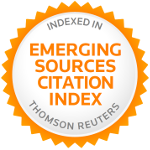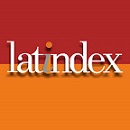Data Driven Learning and teaching of prepositions in ESL: A study of Arab learners
DOI:
https://doi.org/10.46661/ijeri.3809Keywords:
Gender Stereotypes, Psychosocial Risks, Childhood, Adolescence, High EducationAbstract
This paper explores the effectiveness of data driven learning approach in teaching prepositions to Arab learners. English prepositions have been reported to be a typical feature to learn by the Arab ESL learners. Moreover, intermediate or advance level learners have also reported their difficulties in the usage of English prepositions; reasons might be perceptual and cultural differences bet the two language communities. Teacher trained materials prepared from online resources along with TPP corpus, the aim of the present study was to compare DDL and traditional prescriptive rule based method of grammar teaching. Two distinct classes; experimental (n = 41) and control (n = 19) groups were formed who were study English major. Standardized test was conducted as a pre-test to ensure participants equal level of proficiency in using prepositions. During the study duration for a semester, experimental group was exposed to teacher-prepared materials along with TPP to see prepositions in context. Moreover they were asked to explore further through the prepared materials to reinforce their learning from the data. A post-test was administered at the end of the course. The results showed that the experimental group outperformed the control group. It was found that learners’ active role to direct their own learning process caused this encouraging outcome and better learning experience for the learners.
Downloads
References
Abdul, Z. (1990). An Analytic Study of Errors by Iraqi Students Made in English Prepositions of Place Relation. University of Glasgow.
Al-Khairy, M. H. (2013). English As a Foreign Language Learning Demotivational Factors As Perceived By Saudi Undergraduates. European Scientific Journal, 9(32), 1857–7881.
Alrabai, F. (2014). Motivational Practices in English as a Foreign Language Classes in Saudi Arabia: Teachers Beliefs and Learners Perceptions Fakieh Alrabai. Arab World English Journal, 5(1), 224–246.
Alshammari, A. K. (2015). Developing the English Curriculum in the Kingdom of Saudi Arabia: Possibilities and Challenges, Arab World English Journal (AWEJ), 6(4), 365–372.
Alshammari, M. (2017). Spatial scenes in Arabic and English. Florida International University.
Alshammari, M. (2018a). Experiential Study in Learning English Writing: An Inquiry into Saudi Learners’ Concerns. International Journal of English Linguistics, 8(4), 181–191. http://doi.org/10.5539/ijel.v8n4p181
Alshammari, S. R. (2018b). The Effectiveness of STOP and DARE in Planning and Drafting Argumentative Writing: A case of Saudi College Level Students. Arab World English Journal (AWEJ), 9(1), 350–364. http://doi.org/10.24093/awej/vol9no1.25
• Alshammari, S. R. (2016). The different approaches of teaching writing in the classroom. Language, Individual & Society, 10, 18-24.
Asma, T. (2010). Transfer of Simple Prepositions from Standard Arabic into English : The
Case of Third Year LMD Students of English Language at Mentouri, 2009–2010.
Barabadi, E. and Y. Khajavi. (2017). The effect of data-driven approach to teaching vocabulary on Iranian stuents’ learning of English vocabulary. Cogent Education, 4, 1283876. doi: 10.1080/2331186X.2017.1283876
Bennett, G. (2010). Using corpora in the language learning classroom: Corpus linguistics for teachers. Michigan: University of Michigan Press.
Boulton, A. (2010). ‘Data-driven learning: taking the computer out of the equation’.
Language Learning, 60(3), 534-572.
Boulton, A., & H. Tyne. (2014). Des documents authentiques aux corpus: Démarches pour l’apprentissage des langues. Paris: Didier.
Dornyei, Z. and E. Ushioda. (2011). Teaching and Researching Motivation (second edition). Harlow: Pearson Longman.
Flowerdew, L. (2012). Corpora and language education. Basingstoke: Palgrave Macmillan.
Friginal, E. (2018). Corpus linguistics for English teachers: Tools, online resources, and classroom activities. Abingdon/New York: Rutledge.
Gilquin, G. and S. Granger. (2010). ‘How can data driven learning be used in language teaching?’ in A. O’ Keeffe and M. Mccarthy (eds.). The Routledge Handbook of Corpus Lingusitics. London: Routledge.
Grami, G. M. A. (2010). The Effects of Integrating Peer Feedback into University-Level ESL Writing Curriculum : A Comparative Study in a Saudi Context, Newcastle University School of Education , Communication and Language Sciences.
Guan, X. (2013). A study on the application of data-driven learning in vocabulary teaching and learning in China’s EFL class. Journal of Language Teaching & Research, 4(1), 105- 112. doi:10.4304/jltr.4.1.105-112.
Hasan, A., & Abdullah, I. (2009). A Comparative Study of English and Arabic Use of Prepositions Amongst Arab Native Speakers. Retrieved from: https://www.academia.edu/898700/A_Comparative_Study_of_English_and_Arabic_Use_ of_Prepositions_Amongst_Arab_Native_Speakers
Hashim, H. (1996). English Syntactic Errors by Arabic Speaking Learners: Reviewed, 1424–1462.
Hubbard, P. (2009). Computer-Assisted Language Learning. Routledge: USA.
Johns, T. (1991). Printout to Handout: Grammar and Vocabulary Teaching in the Context of Data-Driven Learning. ELR Journal (Birmingham), 4.
Johns, T. (1991). Chapter 2: Should you be persuaded: Two examples of data-driven learning. Classroom Concordancing. Birmingham: ELR.
Kennedy, C. and T. Miceli. (2001). An evaluation of intermediate students’ approaches to corpus investigation. Language Learning & Teachnology, 5(3), 77-90.
Lin, M. H., and Lee, J. (2015). Data-driven learning: changing the teaching of grammar in EFL classess. ELT Journal, 69(3), 264-274.
Luo, Q. (2016). The effects of data-driven learning activities on EFL learners’ writing development, SpringerPlus, 1255. doi:10.1186/s40064-016-2935-5
Luo, Q. and J. Zhou. (2017). Data-driven learning in second language writing class: a survey of empirical studies, IJET, 12(3), 182-196.
Mishan, F. (2004). Autheticating corpora for language learning: a problem and its resolution. ELT Journal, 58(3), 219-227.
Reppen, R. (2010). Using corpora in the classroom. Cambridge: Cambridge University Press.
Rezaee, A. A., H. Marefat, and A. Saeedakhtar. (2014). Symmetrical and asymmetrical scaffolding of L2 collocations in the context of concordancing. Computer Assisted language Learning, Advance Access Published 3. doi:10.1080/09588221.2014.889712
Schmidt, R. (1990). ‘The role of guided induction in paper-based data driven learning’.
Applied Linguistics, 11(2), 129-158.
Tahaineh, Y. (2014). A Review of EFL Arab Learners’ Language: Pitfalls and Pedagogical Implications. International Journal of English Linguistics, 4(1), 84–102. http://doi.org/10.5539/ijel.v4n1p84
Tahaineh, Y. (2010). Arab EFL university students’ errors in the use of prepositions.
Modern Journal of Applied Linguistics, 1(6), 76–112.
Thomas, J. (2014). Discovering English with the Sketch Engine. In S. Jager, L. Bradley,
E. J. Meima, & S. Thouësny (Eds), CALL Design: Principles and Practice; Proceedings of the 2014 EUROCALL Conference, Groningen: The Netherlands, 363-367. Dublin: Research-publishing.net. doi:10.14705/ rpnet.2014.000246
Thompson-Panos, K., & Thomas-Ruzic, M. (1983). The Least You Should Know About Arabic : Implications for the ESL Writing Instructor. TESOL Quarterly, 17(4), 609–623. http://doi.org/10.2307/3586616
Zahid Javid, C., & Umer, M. (2014). Saudi Efl Learners’ Writing Problems: a Move Towards Solution. The Global Summit on Education GSE 2014, 2014(March), 4–5.
Zhang, Y. and L. Liu. (2014). A corpus – aided approach in EFL instruction: a case study of Chinese EFL learners’ use of the infinitive. English Language Teaching, 7(7), 152-158
Downloads
Published
How to Cite
Issue
Section
License
Copyright (c) 2019 IJERI: International Journal of Educational Research and Innovation

This work is licensed under a Creative Commons Attribution-NonCommercial-NoDerivatives 4.0 International License.









